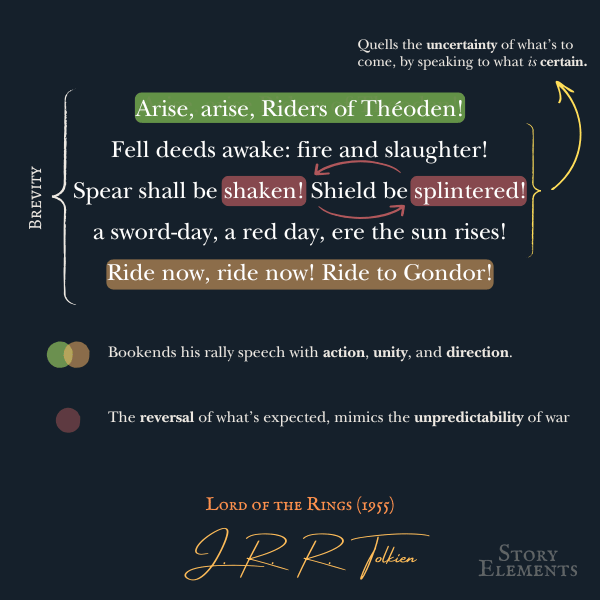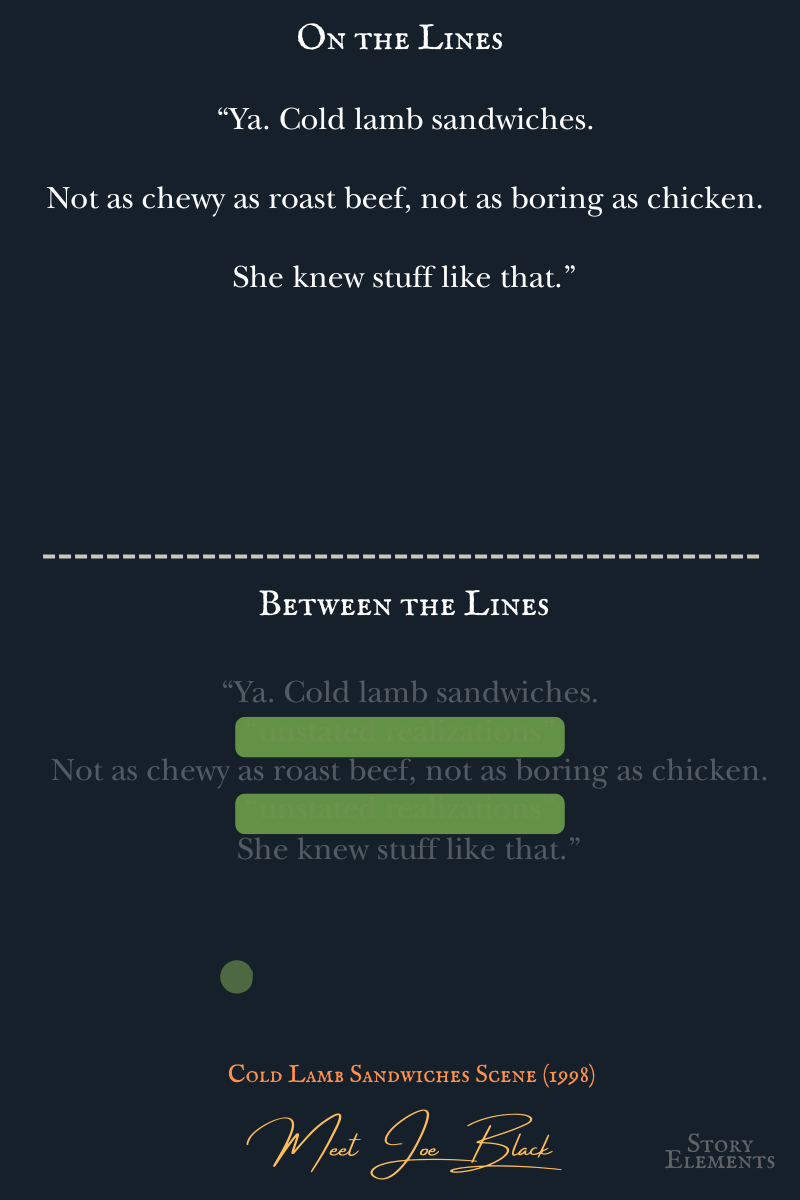- Story Elements
- Posts
- #005: How to Conquer Fear
#005: How to Conquer Fear
"Lord of the Rings" (1955) by J. R. R. Tolkien

War is unpredictable. It’s chaos. It’s uncertain. Life may end right here, right now. It’s enough to make any man, woman, or hobbit freeze and reconsider just why the heck they rode to Gondor to begin with! From the moment we see the armies of Mordor laying siege to Minas Tirith, the clock is ticking. What clock? The psychological one counting down to the moment fear grips the Rohirrim and ends the battle before its even begun.
King Théoden senses it. Merry & Eowyn feel it. And more importantly, Tolkien knows it.
So what’s he do? He writes Théoden’s rally cry to be brief. And in five rhythmic lines, we see just how masterfully Tolkien prepares the Riders and the reader to conquer the armies of Mordor!
To start, Tolkien bookends Théoden’s rally cry with action, unity, and direction. And each is integral for the moment. In times of questioning uncertainty, action shakes us free from the fear seeping into our flesh and bones. But no one wants to embark on the journey alone, so Théoden (Tolkien) unites the Riders under one banner. Names have power. They provide clarity, identity, and meaning and turn the riders from frightened individuals, into one cohesive force.
Once united, Tolkien addresses their collective fear: the uncertainty of what’s to come. How? By speaking to what is certain.
Fell deeds. Fire. Slaughter.
Tolkien doesn’t sugarcoat the hell that awaits. Any deviation from the truth would only reveal ‘chinks’ in the thin armor protecting the minds of the riders. Instead, he jolts them to attention by reversing what they would expect.
Spear shall be shaken! Shield be splintered!
A quick think has you grappling with the opposite. Spears are like sticks – sticks splinter. Shields are like walls – walls shake. By flipping the natural expectations of what happens to weapons and armor in combat, Tolkien mimics the disorientation of war. The chaos. The instability. It’s another certainty that forces the riders—and reader—to focus while grounding them onto the battlefield.
Then Tolkien speaks to the uncertainty of time. Théoden doesn’t know when the battle will end for him, his Riders, or when it will end itself. But he does know how the day will feel—long. The battle will stretch time itself; it will feel like an eternity of blood, steel, and chaos. Yet, it will all unfold before the sun has truly risen.
In three short sentences, Tolkien paints the battle in flashing images that show the before, during, and end moments. Now that the Riders know what awaits them on Pelennor Fields, there’s only one thing left to do … slap the other bookend into place.
Ride now, ride now!
Fear has been kept at bay. But it hasn’t been defeated. What Théoden’s Riders need is a direction. A purpose. A way to conquer fear once and for all.
Ride to Gondor!
Gondor is a symbol of hope, alliance, and the greater good. By naming it, Tolkien reminds the readers what they’re fighting for. It’s deliberate. It ensures that, even as they ride into uncertainty, they do so with resolve, as a single, determined force.
However, in the movie version, King Théoden’s speech is altered.
Instead of hinging his entire pre-battle speech on the hopes that his men (and Eowyn and Merry) will be spurred to conquer the ethereal force before them, King Théoden shouts the name of the beast to show that ‘it’ holds no power.
‘Death!’
It’s the fear drifting between the ranks of Riders. And Théoden’s choice to shout its name is a mirror for an ancient truth: to confront mortality is to embrace life fully. The result is an army of Riders filled not with fear, but with hope.
So, next time you prepare for war, consider the true enemy your army faces, and shape the minds that will fight it. Act. Unite. Direct. Speak to what awaits them, then charge forward into uncertainty! Do this, and you’ll story may just be there after the sun rises.
Passage to Ponder: How to Write Between the Lines

Reply